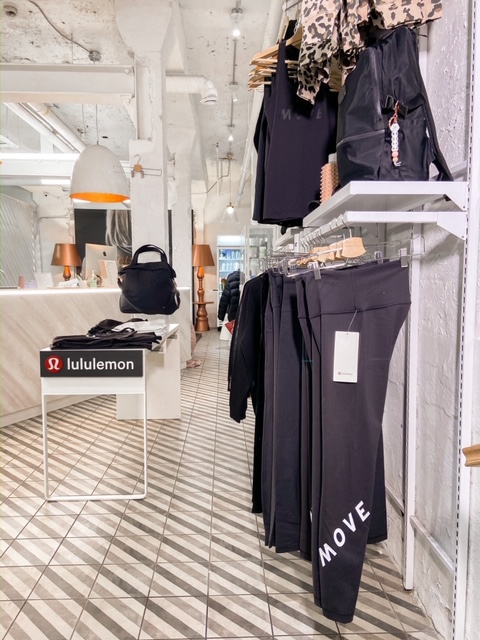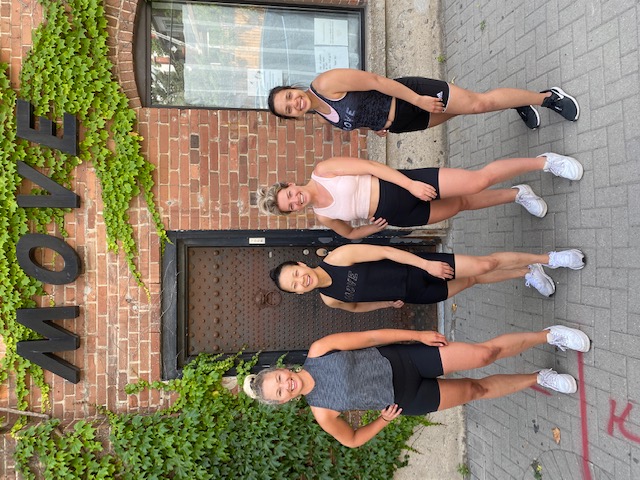Interview with MOVE Fitness Club founder Kelly Taphouse
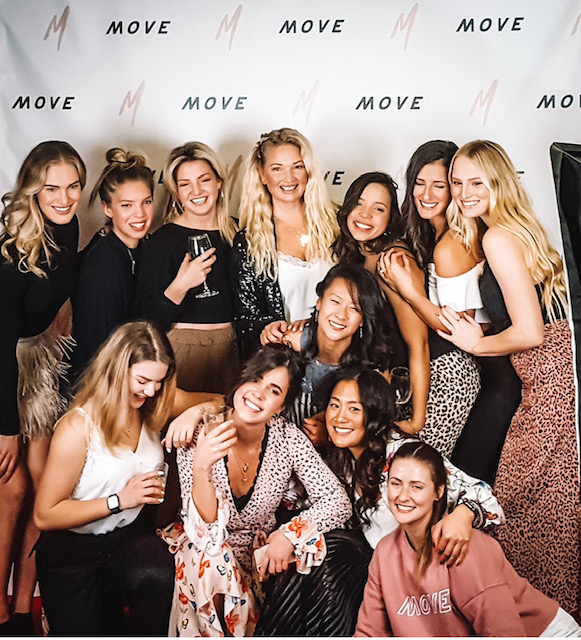
Matt: Thank you for sharing your time for this Kelly, I've been looking forward to this! To kick this off, can you tell me when you first developed an interest in health and fitness? What was it that led you to pursue a career as a fitness professional?
Kelly: I’ve worked in fitness for around 15 years now. Prior to that I was working in a bank as a corporate trainer so I'd always coached in some aspects, but never fitness. While I worked at the bank there was a gym in the office building underneath, so I ended up getting a membership. I had never gone to the gym before. I definitely wasn’t a natural born athlete and I didn't play a ton of sports at school. Everyone I knew seemed to be getting a gym membership so I just decided to get one and start working out. Like most women at the time I pretty much only worked out in the cardio section to start. One day I had an experience that became the driving inspiration behind opening MOVE, the fitness club that I own today. A male trainer approached me while he was prospecting for new clients. It’s part of his job, but he went about it in a very poor way. He said, “You know, you’d look great if you lost 5 pounds. I can help.” Prior to this experience I’d never really thought about my weight. I was just kind of average in terms of my body, you know? So I became focused on this, eventually lost the weight, and later on another trainer told me that I would do well in fitness competitions. I was still bright-eyed and new to this fitness thing, so I just said ok and asked what I had to do. This ended up being a major turning point in my life. I went on to compete in fitness competitions for about six years. While I was competing I developed eating and body image disorders. My weight would go up and down like 30 pounds or so. I had just developed such a poor relationship with fitness, food, and my body. I knew I had to make a change, but I really felt stuck. While I was competing I was just so focused and in love with fitness that I ended up quitting my job at the bank so I could become a personal trainer. I applied to a gym and didn’t get the job because I didn’t have any experience or a certification yet. I studied, took the test, got my certification and started working at Bally’s Fitness. I was working there for around six months and one day Kelly Thorne walked in. She was working for Bally's at the time and was doing a meet and greet with the new trainers. From that point on Kelly took me under her wing. With her mentorship I was able to start moving up the ladder to become an assistant manager, then a club leader, and eventually a regional director for personal training. So my career in fitness was going really well, but personally I was struggling with my own fitness. Around that time I had my first son and my career in corporate fitness was sort of coming to an end, so I had to make some decisions with what I wanted to do as a Mom. I was feeling really far away from my grassroots, which was training and coaching, because when you're in leadership you really don't have the time to do that anymore. To add to that, I had gained about 70 pounds in the pregnancy. Honestly, I was literally at rock bottom. I hated fitness, I hated my body, and didn’t have a job I enjoyed. It was a really hard time for me, but I knew that I just had to get out and I just had to move. I started to look into fitness options for new Moms, specifically with childcare available, and didn’t find a lot of great options. There was stuff like stroller boot camps where all the babies would be crying in strollers while you do jumping jacks in the park. I didn’t want to be a part of that. I ended up hiring a female personal trainer which was another defining moment for me. She asked me during the initial assessment what my goals were and the first thing I said was that I wanted to lose the baby weight. She just sort of paused and then said that she didn’t do fat loss. She only focused on strength. It was like time stopped, I was like “what do you mean?!?!” I figured, well I have nothing to lose so let’s just do this, let’s get strong. It was a whole new concept for me because the fitness world for women is so focused on your external appearance. The focus is always on the shape of your butt which has nothing to do with how well you move or how strong you are. The fitness industry as a whole is not an empowering space for women. So I went on to train with a trainer, six months went by, and I found myself completely falling back in love with fitness. I was doing really cool shit. I was doing pull ups for the first time, I was nailing my like proper pushups, I was deadlifting and squatting. I'd lost all of the baby weight and there wasn't a single moment where that was applauded or even talked about. I started to think about it more and realized that this is the type of experience I need to create in the fitness industry. I needed to create a fitness space for women. I wanted women to experience the benefits and empowerment that I felt. I talked with my partner and he encouraged me to write a business plan. As I was writing down the ideas and concepts I just became more and more convinced. I ended up finding a space and the MOVE Fitness Club was born. A very inclusive, exclusive space for women with childcare that is 100% focused on helping women move well, get strong, and be their best. Nothing more.
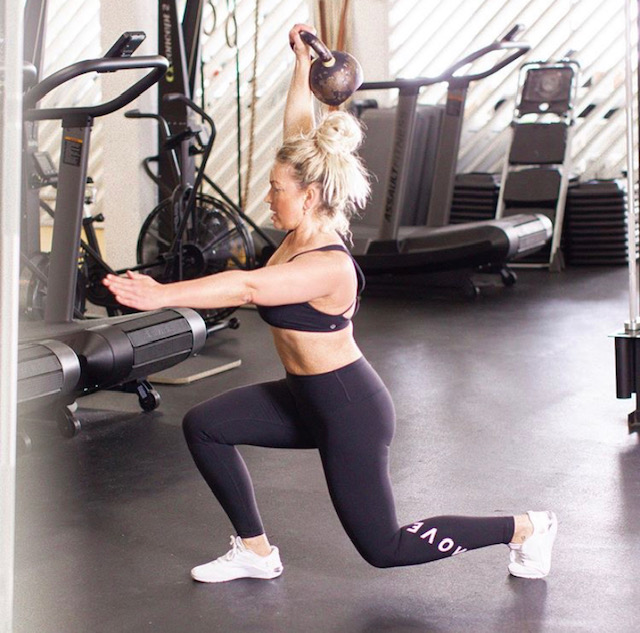
Matt: That’s a wonderful story, thank you for sharing that. Going back to when you were working in the corporate personal training world, you had worked at Bally’s and then Goodlife Fitness which was an incredibly fast growing company. When you were looking to open your own boutique fitness club what were the lessons and skills that helped from your previous work experience?
Kelly: Oh my gosh, literally everything (laughin). I was very fortunate and grateful to have worked for Goodlife Fitness for almost 10 years. While I was there I had the opportunity to work with some extraordinary leaders. I was able to grow with a company who did some very, very great innovative things for personal training and, at the same time, had some really hard challenges with running their personal training program. You learn a lot when you watch a company grow, make mistakes, and take huge strides forward. I really feel that that gave me so much insight and really prepared me for starting MOVE. I see so many coaches and personal trainers that want to branch off and open their own gym much sooner than they should. I think it’s just such a big mistake because there’s so much you can learn from other companies and people. For example, one of the biggest skill sets that coaches can benefit from while working for larger gyms and personal training companies is how to sell. As a fitness professional you need to learn sales and business development. How can you possibly survive in this world and become a successful entrepreneur if you don’t have these foundational skills? Those skills can be learned very quickly, but it takes years to get a very high-level.
Matt: Can you walk me through the process of when you were opening MOVE Fitness Club? What was that like? Did you raise any funding? Was it mostly bootstrapped?
Kelly: The vast majority of MOVE Fitness Club is bootstrapped. When I was writing the plans for opening the fitness club the first place I worked on was figuring out what my niche was, defining what was going to separate us from the mainstream gyms and all of the other boutique personal training gyms and studios out there. I focused all of my market research on women's fitness. I was looking at what the problems were, what solutions I could provide, what needed to be fixed when it came to the experience for women in the fitness industry. It wasn’t a huge shock, but my research showed me that a lot of women had similar experiences as I had on my own fitness journey. To explain that further, there simply weren’t a lot of clubs exclusively focused on serving women and providing classes with A+ quality strength coaching. There weren’t a lot of gyms with childcare options. There was a lot of toxicity for women that prevented them from being able to go further with their own health and fitness.
Matt: A few questions here, I’d love to get a clearer business profile for MOVE Fitness Club. How big was the location for Move when you opened? How big was the team? What type of training services were you offering when you started?
Kelly: So after I’d put my financial plans together we were looking for a space for a while. I was struggling to find a space that I could afford that would allow me to be profitable after 3-5 years. One day I was feeling discouraged and my partner was just like, “Why don’t you go for a walk to clear your head?” On that day I just happened to walk by a building that had a big new sign that said 5,000 square feet for rent. I called, made the appointment, and within 48 hours signed the lease and that’s where MOVE Fitness Club is today in Toronto. The space was really raw, I think it used to be a Coca Cola bottling plant. I had a really strong can do attitude and thought I would be able to do everything myself to prepare the gym, but I quickly realized after a few weeks that I needed some help (laughing). I found an interior designer through the referral of a friend and he helped me create the experience I wanted for MOVE. He did a phenomenal job to help ensure that the look and feel of the space matched the brand, it's fabulous. When we first opened I struggled a bit. I had all of this prior experience in corporate fitness and personal training in developing coaches and trainers, but I hadn't opened a studio before. I opened MOVE with a really full schedule of five group classes a day and I hired two coaches.The three of us ran the show for a year and Move grew in popularity really fast in our community. I think women were looking for a space and we’re in a very family oriented community as well. There was just a good fit with our offerings and our market. We’ve almost reached our five year mark as a business and have really evolved. Prior to the pandemic (and our goal is to bring everyone back) we had reached a team of 13 including our coaches. We have a head coach and an assistant general manager role that we’ve developed. We have our childminders and have added children’s programs. We run very successful after school programs specifically for TaeKwonDo and gymnastics. We have our front desk crew and a smoothie bar. The idea there was to add something to support one of the pillars of my business model, nutrition and recovery. When we first opened the smoothie bar we didn’t have time to make anyone smoothies because we were so busy with our classes (laughing), so the full time front desk crew has really helped. We’ve expanded and added chiro services in the club. In terms of training and programming, when we first opened I didn’t have a plan B. My gym was all about hardcore strength training for women. If you’re going to be about, be about it, you know? Over time we’ve evolved to add more styles of fitness. One of the challenges with Covid-19 as a strength focused club owner is that you’re really not able to offer proper strength training right now. We’ve been offering virtual classes and rent out equipment, kettlebells and light dumbbells. So we’re doing a lot of conditioning work and after this we plan on expanding our movement menu to include conditioning classes as well.
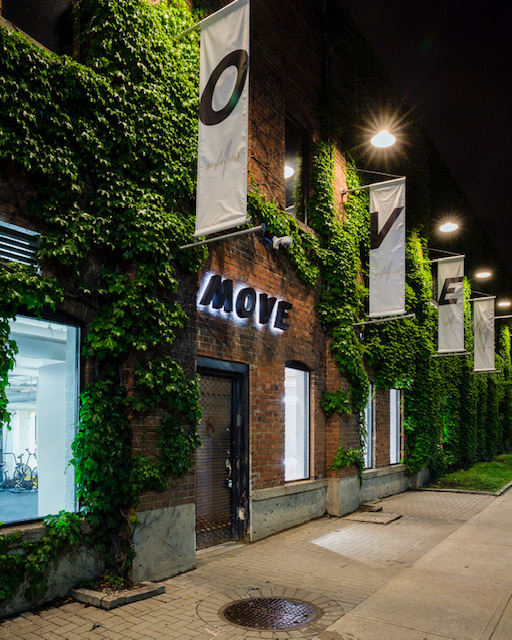
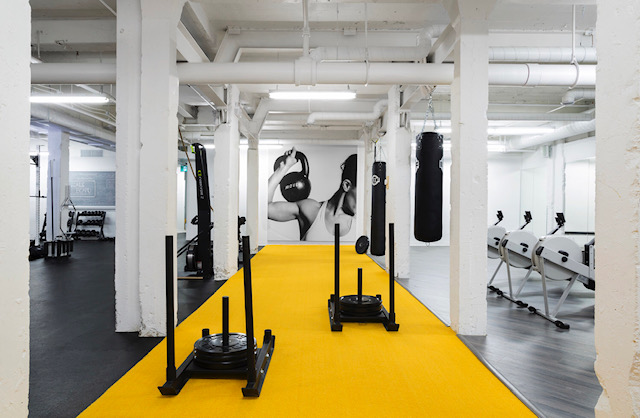
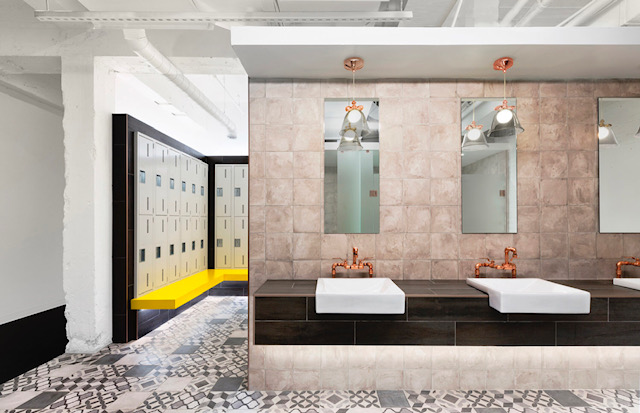
Matt: What’s the normal flow for a customer engaging with your training services? I see on your website that you have small group training and 1on1 private personal training. You mentioned you’re offering a virtual training experience due to Covid-19 right now. Does everyone start with group first, or 1on1 personal training first, or is it up to the customer?
Kelly: When we first opened our goal was to make sure every single new member got an assessment. Through that assessment we would take the member through the movements together and then place them in our classes. If they were absolutely new to exercise we would recommend a starter pack of personal training to gain more experience with the exercise movements. Now we don’t have the capacity to do these assessments for everyone, so we only do them if the member has purchased personal training. So, everyone is welcome to our group strength classes. The coaches are trained to look for new members and will have a conversation with them after class if the member could benefit from getting some extra help through personal training.
Matt: That makes a lot of sense. Group classes are your premier offering and you have clear paths for members if they need it. So one of the missions behind StrengthPortal is to help move our industry forward so that fitness professionals can have a full-length career in the industry compared to the current average career, which is less than three years. I’m sure this was one of the biggest challenges you worked on at Goodlife Fitness. I’m curious what your approach to this challenge is at MOVE. What have you put in place to best position your training team to have long-term careers in this industry?
Kelly: Absolutely, so one thing that was really powerful that I took from my time at Goodlife Fitness was to do goal setting with our coaches, short-term and long-term career planning. To add a bit of background to my approach, a few years ago I was brought on by Lululemon as one of their ambassadors (MOVE is also an authorized reseller). During the time I've been with them I've just had incredible leadership training. I've never met a company more people centric than Lululemon is on the inside. Admittedly, when I first opened up MOVE I made some poor hires. I didn't truly know what qualitative attributes were that I was looking for when adding people to my team. At first I was just looking at who was the most technically skilled coach so that’s who I ended up hiring. What I ended up finding was that there were big gaps between what I needed and who I hired for. The coaches didn't want to be part of my movement, they didn't want to be part of our team, and they were hard to manage. I did this for two years before my partner and I realized I was making the same mistake over and over. So I went in a different direction and it’s been amazing. So when you are full time with us at MOVE Fitness Club we invest in you. We have an annual education allowance. We have preferential rates at some of the top fitness education providers in our city and in our country. One of the things that’s really great about working for smaller gyms compared to bigger companies is that our employees have the ability to wear different hats. For these young entrepreneurial spirits, our personal trainers and coaches, that's really important. So at MOVE our team gets to do a little bit of everything. We’ve brought our team into a lot of the decision making processes. Their opinions are always asked for. They're learning about marketing. They're learning about social media. They're heavily involved in program design. So that kind of stuff has been really good for our team retention and for helping our team members have long-term careers doing what they want to do with fitness.
Matt: I love to hear that. So let's transition over to the current day. You've been building MOVE for close to five years now, you're getting the right people in the right spots for the team, and you’re creating a strong community with your team and clients. Then Covid-19 comes out of nowhere and smacks the entire industry across the face. How has Covid-19 affected Move Fitness Club? What have you been doing as a small business owner to get through this?
Kelly: It’s been really, really tough. I shut down my club a few days before it was mandated because it was the right thing to do. I could tell my community was starting to get a little bit freaked out, so I just said we have to take a pause here. As a business owner, along with everyone else, you’re just kind of in shock for a while, but we knew that we had to get some Instagram workouts out there as soon as we could. Within what seemed like a week everyone was a personal trainer on Instagram. The feed was saturated with advice and free at home workouts. I felt frustrated and knew that this wasn’t going to keep my community held together. We decided that we were going to do Zoom private classes and charge a very nominal fee with an option to pay as you can. I’m so thankful that we transitioned as quickly as we did because we are doing really well with these virtual fitness classes. We can connect with our members and we can see everyone’s faces. I’ve kept my assistant manager and a few coaches on staff and they are teaching classes from home. I can continue to coach Zoom classes from MOVE Fitness Club because it’s my space, so I’m here alone at the moment. I think we just got the go ahead for outdoor fitness a week ago so we’ve launched our small group training classes outdoors literally overnight. We’ve got our semi-private training outdoors, we've got one on one private training (which can be co-ed as well) outdoors. It’s just been a lot in a very short amount of time. It’s challenging because you don’t really get a lot of information and you’re moving so quickly. You have to experiment with how to price these programs on the fly, for example.
Matt: When you’re able to open the doors and get back to some semblance of normal what do you envision MOVE Fitness Club looking like 3-6 months from now? Will you be making any permanent adjustments stemming from the rapid experimentation you’ve been doing during the Covid-19 pandemic?
Kelly: Yes, we’d had an interest in building something on the online side for a while, but with my rigid focus on strength training we weren’t really sure how that experience would transition to an online experience. I hadn’t figured out a way to do that yet that aligned with my business ethics. The silver lining with Covid-19 is that it forced us to ramp up our online business really fast and it kind of softened me a little bit to say that we could focus on conditioning more than we had before. It’s not the type of conditioning workouts where you feel as if you’re going to die at the end of it. Now we have strength classes with more of a conditioning focus at the end, pure bodyweight classes with a blend of strength and conditioning, and so on. You have to stick to your brand, but you also have to be flexible.To add to that, I’d always wondered if we could add outdoor workouts. We have this beautiful space, but we never opened it up to workout on these beautiful summer days, you know? Now we have these two services established. I assume that when we're allowed to open our doors 3-4 weeks from now we will most likely be running at a reduced capacity. Reduced capacity unfortunately won’t pay our rent or allow me to make any money, so the outdoor and virtual training should augment that. Hopefully by the end of Fall 2020 we’ll be back at full capacity and we’ll keep the virtual component going as well.
Matt: For the virtual training what exactly do you mean by that? Group Zoom training or is it more of a hybrid personal training where your members will be able to train in-person and receive workouts to do at home? There are a lot of different flavors with online personal training so I’m curious how you envision structuring this in the long-term.
Kelly: My vision is for in-person and remote virtual group classes to continue along with 1on1 private training. In terms of sending workout programs we’re not there yet, it isn’t a focus of ours in the short-term.
Matt: That makes total sense, it seems like the best fit for the services you were already offering with Move. Another question along those lines, how has your community adapted to all of the changes?
Kelly: I’ve never seen anything like it in my life. I am so fortunate and grateful. I knew that this was one of the pieces that was really missing from my corporate fitness experience, that sense of community with connection. It’s tough to find in a larger gym environment, but the power of community is insane and I didn't know that before. About 75% of our members have stuck with us for the virtual classes.
Matt: Wow, that's huge. That’s a true testament to how great of a community you’ve built. 75% retention is incredible and that’s the type of number you’ll only find in a boutique fitness gym or personal training studio that’s built a really strong “third place”, especially with all the chaos that’s happening right now. So obviously the main goal as a business owner is to first survive right now, but I’m curious what your thoughts are for the boutique fitness industry and where it will be in the next 3-5 years. Where are we headed?
Kelly: It’s really hard to answer, it sort of depends on where you live. I’ve been asked this question a few times by colleagues in the industry now. I think there will always be room for both big box fitness and boutique fitness. The type of experience a company like MOVE can offer is really hard to compete with, that sense of community gets diluted at Big Boxes as we talked about. However, there are many different types of consumers out there with different types of needs. What I know is that there is a strong market for women who are willing to pay for a feeling of community, connection, and quality fitness. So I think that fitness businesses in general will continue to thrive. Boutique gyms in particular might have a bit of an advantage since it’s rare to have more than 20 people in their space at once. It makes it easier to sanitize and implement safety measures.
Matt: That’s a really good point. I just did an interview with Rick Stollmeyer, the CEO of MindBody, and we were talking about how boutique gym owners may not realize how great of an advantage it is to be able to adapt and move quickly. For example, a big box gym chain may take 2-3 years to implement a new training service or program, but you could do it overnight. Along those lines, where do you see MOVE Fitness Club 5-10 years from now? What’s the larger vision that you’re working towards?
Kelly: I want to continue to broaden our reach to connect with more women and move into working with women in different age groups, specifically teen girls. One of the challenges we face with being a strength focused gym is that women tend to gravitate towards conditioning and cardio because they believe that's just going to help their bodies become smaller. We have to continuously educate our members to ignore that and instead focus on the importance of strength training. Having said that, we’ve learned from doing our Zoom classes that doing some conditioning workouts along with the strength can make our members feel really good so we’ll keep that up. I think that our team at MOVE can scale beyond our current location, which is an exciting goal to work towards. I'd love to consider franchising regions after we organically grow into a few more locations. Ultimately my goal is to have more of Move around the world. It’s a wonderful mission for me and reflects the personal fitness journey that I went through. I think back and wish I had been exposed to really positive messages about strength and fitness at the beginning and how helpful it would have been for me. If we can work with women earlier on in their fitness journey and establish these positive habits it will have an amazing impact on their long-term health and happiness.
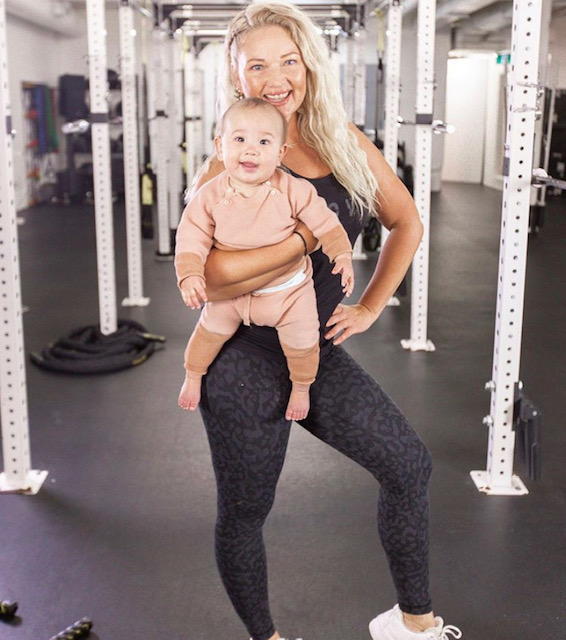
Matt: I couldn’t agree more. That’s all the questions I have Kelly, thank you so much for sharing your time and story. I’m looking forward to watching MOVE continue to grow from here!
If you’d like to connect with Kelly and follow Move Fitness Club check out the links below:
Subscribe to StrengthPortal Blog
Get the latest posts delivered right to your inbox
